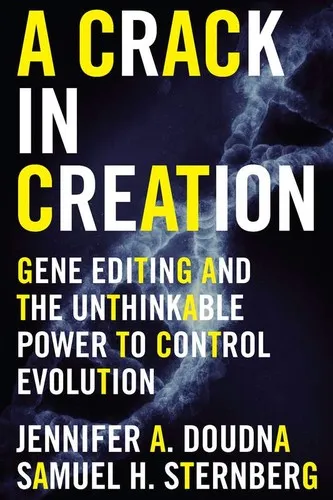1
mention
mention

Very similar to Watson's "The Double Helix", this book is a part story of discovery and part a textbook, in this case on the topic of CRISPR, from a scientist deeply and technically involved in the technology. The first half of the book explains the basics of DNA, the central dogma, the massive, ancient (and still ongoing) virus-bacteria molecular warfare, the historical context of gene editing research, and finally how CRISPR was discovered and why it is such a big deal. CRISPR evolved as part of a bacterial immune system where the bacteria stores explicit records of viral DNA segments in their genome. Together with a number of Cas (CRISPR associated) proteins encoded by genes in the vicinity, the resulting molecular assembly is able to search the genome for stretches that "match", inducing a double stranded break that disables the gene. It's incredible that this molecular machine was found by evolution and that there are so many forms of it. It's hard to imagine the Cas9 protein whizzing about the nucleus in brownian motion (it does not hydrolize ATP!), interacting with chromatin/histones and somehow cutting up matches. The biophysics of this process elude me. Anyway, this immune system mechanism can be repurposed, improved and generalized to perform very targeted and cheap gene editing (delete, insert, substitute, invert, ...), gene expression up/down regulation, tagging, etc. This is now actively utilized in animals and plants (in both somatic and germ cells), and also on humans (in somatic cells for treatment of many diseases, or more worryingly in the germ line for making permanent targeted changes to human DNA). The book also discusses gene drives, which allow us to hack evolution itself, e.g. giving us the ability to wipe out the entire population of mosquitos, on which I have very mixed opinions. It also goes into some remaining challenges such as specificity, delivery, etc. In some aspects it is not as comprehensive as I'd like (e.g. how the adaptation part works, or what the limits are). In summary, this is really the beginning of a powerful set of technologies with broad societal implications, as we begin to reprogram both us and the nature around us in hyper-targeted ways. It's refreshing to find a book that does such a good job describing large portions of it without dumbing it down too much, and also doing a good job hinting at some of the associated ethical dilemmas ahead of us. 4/5
— Andrej Karpathy
2019-05-03 on goodreads.com